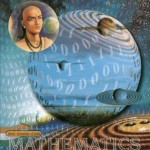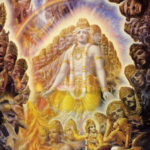
One big text book and I’m so glad it’s done coz carrying this around was just plain cumbersome. After reading it I’ve got to confirm my idea that religion is just a way of shepherding and a way for government and world leaders to lead and enforce what they need to at that time. Well that’s what religion is mostly about… I still respect the scriptures. Don’t get me wrong… it was a great read and had a plethora of history and some amazing thoughts from great people. Anyway… a 7 dimensional framework is used to analyze the religions which are – ethics, ritual, narrative/myth, experience, institutions/society, doctrine and art. The book is divided into 2 parts where the first part is about early religion and the second covers the new stuff from 1500’s and onwards mostly. I’ll let the contents explain the rest.
Contents:
– Introduction.
Part I
– 1: Earliest Religion.
The Problem of Origins.
The Patterns of Prehistoric Life.
– 2: South Asia
India’s Diversity.
The Ingredients of Indian Religion.
The Early Period.
Buddhism.
Sramanic Alternatives.
Brahamanism, or the Religion of the Upanishads.
Theravada Buddhism.
The Rise of the Mahayana.
Classical Hinduism: its Main Shape.
Buddhism Spreads North: the Tibetan Experience.
The Goddess and Hindu Tantra.
Islam in India.
Regional Movements.
The Indian Tradition in the Classical and Medieval Periods.
– 3: China.
A General Perspective.
The Early Period.
Buddhism Comes to China.
The Medieval Period.
The Korean Contribution.
– 4: Japan.
The Main Lines of Japanese Religion.
The Early Period: Kami and Foreign Influences.
The Preclassical Period.
The Classical Period.
Japanese Classical and Premodern Religion.
– 5 Southeast Asia.
Regional Patterns.
The Theravada and the Classical Period.
The Contribution of Southeast Asia to Religions History.
– 6: The Pacific.
The Pacific Experience.
Dimensions of Polynesian Religion.
Melanesian Religion: Some Patterns.
Micronesia.
Australia: the Land of the Dreaming.
– 7: The Americas.
A Wide Scene.
The Religion of the Incas.
Small-Scale Societies in South America.
The Caribbean.
Civilizations of Central America.
North America.
– 8: The Ancient Near East.
An Overview.
Mesopotamian Religion.
Ancient Egypt.
Canaanite Religion.
Israelite Religion.
– 9: Persia and Central Asia.
The Unification of the Medes and Persians.
Zoroastrianism.
Mani and Another Use of Dualism.
The Geographic Significance of Central Asia.
– 10: The Green and Roman World.
Greek Religion.
Religions within Religion.
Roman Religion.
Religion in Palestine.
Jews and Christians in the Hellenistic World.
The End of Graeco-Roman Religion.
– 11: Classical and Medieval Christianity and Judaism.
The Trinity Doctrine.
Roman Versus Greek Forms of the Faith.
The New Life of Judaism.
Medieval Christianity.
Worlds That Disappeared.
– 12: Classical and Medieval Islam.
Islam – an Overview of its Spread.
The Life of the Messenger of Allah.
Beyond the Early Period: the Formation of Classical Islam.
The Rise of the Shi’a and the Concept of the Imam.
Medieval Islam.
– 13: Classical African Religions
The Configurations of Africa.
Dimensions of African Religion.
Some Representative Patterns.
Reflections on African Religion.
PART II
– 14: The Explosion of Europe and the Re-Forming of Christianity.
The Unleashing of New Forces from Europe.
The Reformation: Theology and Political Power.
The Counter-Reformation and the Formation of Modern Catholicism.
Enlightenment, Capitalism, and Nationalism.
Jewish Emancipation and the New Europe.
Russia and the New Learning; the Drive East.
Modern Europe.
– 15: North America.
A New Pluralism.
The Religious Affairs of the Colonies.
From the American Revolution to the Middle of the Nineteenth Century.
The Effects of Mass Immigration.
Evangelicals and Fundamentalists.
Developments Since World War II.
Liberal Christian Theology in the Twentieth Century.
Reflections on American Religion.
– 16: South Asia and reactions to Colonial Intervention.
The Varieties of Indian Life.
The Raj: Challenge and Response.
The Early Twentieth Century.
After Independence.
Reflections on Religion in South Asia in Modern Times.
– 17: China and Korea in Modern Times.
The Chinese Predicament in Colonial Times.
Mao and New China.
The Chinese Diaspora.
Modern Korean Religion.
– 18: Modern Southeast Asia.
Southeast Asia and the Colonial Period.
Thailand and the Process of Modernization.
The Burmese Solution: Withdrawal from the World.
Cambodia and the Purification of Kampuchea.
Vietnam and the Long Struggle Against Foreign Domination.
The Singapore Experiment in Welfare Capitalism.
Reflections on the Southeast Asian Scene.
– 19: Japan in Modern Times.
Into Seclusion.
Opening Up and Inner Transformation.
Japanese New Religions.
Nationalism in Japan and its Aftermath.
Does an Overall Japanese Worldview Exist?
– 20: Islam Passes Through the Shadows.
Setbacks and Responses.
Nationalism and the Islamic Anticolonial Struggle.
Iran and the Backlash Against Modernization.
Islam Beyond the Middle East.
Reflections on Modern Islam.
– 21: The colonial Impact in the Pacific.
The Opening Up of the Pacific by Europeans.
Australia and New Zealand.
Melanesia and the Cargo Cults.
The Pacific Way.
– 22: Eastern Europe and the Soviet Union.
Russia: Expansion and Revolution.
Varieties of Marxism.
Religion in the Soviet Union.
Soviet Atheism.
– 23: Africa in the Modern World.
The European Impact.
The Penetration of Christianity into Black Africa.
Islam South of the Sahara.
Ethiopia and its Ancient Christian History.
New Religious Movements in the Modern Africa.
Reflections on Black Africa.
– 24: Latin America and the Caribbean.
The Spirit of the Conquest.
The Liberation of Latin America.
Religion and Race.
Reflections on the Latin American and Caribbean Scene.
– 25: Some Final Reflections on Global Religion.
The New Forms of Religion.
Reactions to the West.
Religion and Global Communications.
Worldview Analysis and the Future of Education.
– Bibliography.
– Credits.
– Index.



